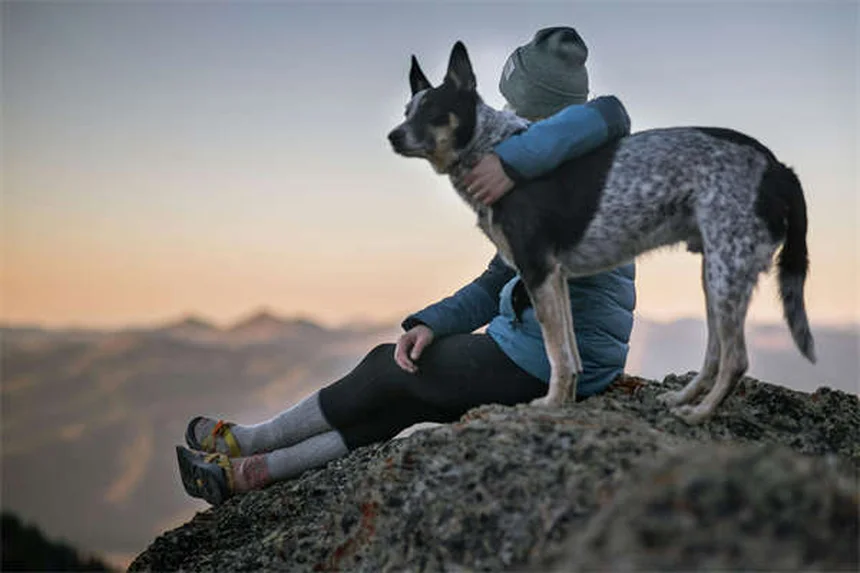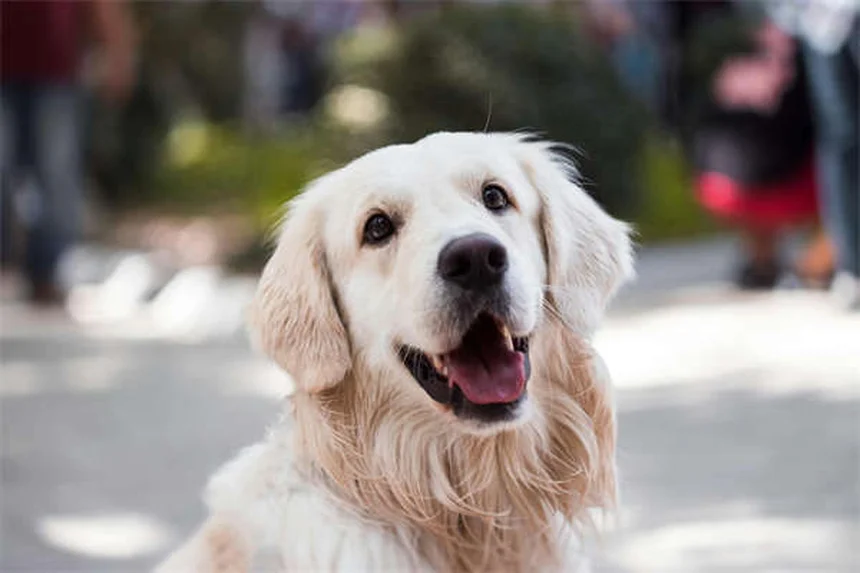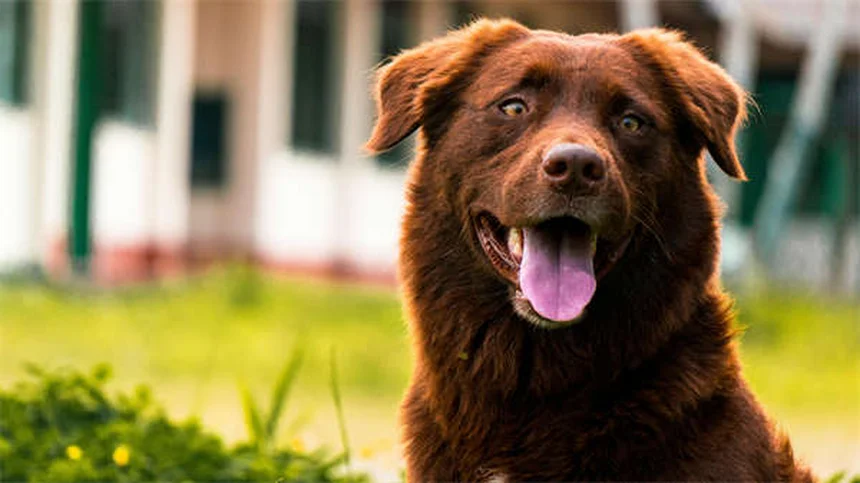Advertisement
What is obesity in dogs? The answer is simple: it's when your furry friend carries so much extra fat that it starts harming their health. If your dog weighs 20% more than they should, that's the obesity danger zone. And here's the kicker - about 65% of U.S. dogs are overweight or obese! Those extra pounds aren't just cosmetic; they can lead to serious problems like arthritis, diabetes, and even shorten your dog's lifespan.I've seen too many well-meaning owners accidentally harm their pets with just one more treat. The truth is, that belly rub might feel softer now, but you're actually decreasing your dog's quality of life. The good news? With some simple changes we'll discuss, you can help your pup shed those pounds and add years to their life.
E.g. :Dog Spay Surgery: What to Expect & Why It's Important
- 1、Understanding Dog Obesity: More Than Just Extra Pounds
- 2、Spotting the Signs: Is Your Dog Overweight?
- 3、Getting to the Root: Why Dogs Gain Weight
- 4、What Your Vet Will Do: The Obesity Checkup
- 5、The Game Plan: Helping Your Dog Lose Weight
- 6、Keeping the Weight Off: Maintenance Mode
- 7、The Emotional Side of Dog Obesity
- 8、Creative Exercise Solutions for Busy Owners
- 9、The Science Behind Dog Weight Loss
- 10、Weight Loss Success Stories
- 11、When to Seek Professional Help
- 12、Maintaining the New Normal
- 13、FAQs
Understanding Dog Obesity: More Than Just Extra Pounds
What Exactly is Canine Obesity?
Let me break it down for you - obesity in dogs isn't just about your pup looking a bit rounder. It's when fat builds up to the point where it actually starts causing health problems. Think of it like this: if your dog weighs 10% more than they should, that's overweight. Hit 20% over? Now we're talking obese territory.
Here's something that might surprise you - nearly two-thirds of American dogs are carrying too much weight. That's right, 65%! And just like with us humans, those extra pounds can lead to all sorts of trouble. We're talking joint pain, breathing issues, even diabetes. Not exactly the kind of gifts we want to give our furry friends, right?
Why Should You Care About Your Dog's Weight?
Ever wonder why your vet keeps nagging about your dog's weight? Here's the deal - obesity can shave years off your dog's life. I'm not exaggerating! Those extra treats you're giving out of love? They might actually be shortening your pup's time with you.
Check out these common obesity-related conditions:
| Condition | How Obesity Makes It Worse |
|---|---|
| Arthritis | Extra weight puts more stress on joints |
| Diabetes | Fat interferes with insulin function |
| Heart Disease | Heart has to work harder to pump blood |
| Breathing Problems | Fat restricts lung expansion |
Spotting the Signs: Is Your Dog Overweight?
 Photos provided by pixabay
Photos provided by pixabay
The Obvious and Not-So-Obvious Clues
You don't need to be a vet to notice some of these red flags. Here's what to look for:
• That collar fitting tighter than last year? Might be time to check the scale.
• Less energy for walks? Could be those extra pounds slowing them down.
Here's a quick test you can do right now: run your hands along your dog's sides. Can you easily feel their ribs without pressing hard? If not, we might have a problem. From above, your dog should have a slight hourglass shape - if they look more like a sausage, it's time for action.
Breeds That Pack on Pounds Easily
Did you know some breeds are basically professional snackers? These guys tend to gain weight easier:
• Labrador Retrievers (those puppy-dog eyes get them extra treats!)
• Beagles (nose always leading them to food)
• Dachshunds (little legs carrying more weight than they should)
• Pugs (their round shape makes it hard to notice weight gain)
Getting to the Root: Why Dogs Gain Weight
The Usual Suspects
Let's be honest - most of the time, it's our fault. Those extra treats, table scraps, and "just one more" portions add up fast. But it's not just about food - too much couch time plays a big role too.
Here's a question that might make you think: When was the last time you actually measured your dog's food? Guessing portions is like playing Russian roulette with your dog's waistline. That "cup" you're using might be holding way more than an actual measuring cup!
 Photos provided by pixabay
Photos provided by pixabay
The Obvious and Not-So-Obvious Clues
Sometimes it's not just about diet. Conditions like hypothyroidism (when the thyroid gland slacks off) or Cushing's disease (hormones gone wild) can cause weight gain regardless of diet. If your dog's packing on pounds despite your best efforts, a vet visit is in order.
What Your Vet Will Do: The Obesity Checkup
The Scale Doesn't Lie
Your vet will track your dog's weight over time - sudden jumps are big red flags. They'll also do something called body condition scoring, which is basically a report card for your dog's physique.
There are two main scoring systems:
• The 5-point scale (3 is perfect)
• The 9-point scale (4-5 is ideal)
Tests That Might Be Needed
Depending on what they find, your vet might recommend blood work to check for those medical conditions we talked about. If weight gain happened super fast, they might even suggest x-rays to look for fluid or masses.
The Game Plan: Helping Your Dog Lose Weight
 Photos provided by pixabay
Photos provided by pixabay
The Obvious and Not-So-Obvious Clues
Think you need to run marathons with your dog? Not so fast! Start with 15-30 minutes of activity daily. Walks count! So does fetch, swimming, or even indoor play when it's nasty outside.
For older dogs, shorter but more frequent sessions work better. Remember - we're trying to help them, not wear them out!
Diet Changes That Actually Work
Here's where teamwork with your vet comes in. They might recommend:
• Cutting out table scraps (yes, even those "just this once" treats)
• Switching to a weight management food
• Actually measuring portions (shocking, I know!)
A good goal is 1-2% body weight loss per week. That might not sound like much, but slow and steady wins the race. Some prescription diets can really help, but you'll need your vet's okay for those.
Treat Alternatives That Won't Wreck the Diet
Who says dieting has to be miserable? Try these vet-approved snacks:
• Baby carrots (crunchy and low-cal)
• Frozen green beans (refreshing summer treat)
• Pumpkin (fiber-rich and tasty)
Keeping the Weight Off: Maintenance Mode
Transitioning to Maintenance
Once your dog hits their goal weight, your vet might suggest switching to a maintenance diet. But don't go back to old habits! Keep up with exercise and watch those treat portions.
Prevention is Easier Than Cure
Here's the golden rule: it's way easier to prevent obesity than to fix it later. Stick to scheduled meals instead of free-feeding, keep treats reasonable, and make exercise part of your daily routine.
And here's the best part - when you exercise with your dog, you both win! Better health, stronger bond, and more energy all around. Now that's what I call a win-win!
Final Thought
Remember that time you swore you'd start eating better on Monday? Yeah, dogs have that same mentality. They'll always take that extra treat if you offer it. That's why they need you to be their willpower!
The Emotional Side of Dog Obesity
How Your Dog Feels About Extra Weight
Ever seen your dog struggle to jump on the couch like they used to? That frustration you see in their eyes is real. Dogs don't understand why they can't move like before - they just know something's wrong. Imagine carrying a backpack filled with rocks everywhere you go - that's what obesity feels like for your pup.
Here's something vets don't always mention: overweight dogs often show signs of depression. Less playfulness, more napping, avoiding activities they once loved. Sound familiar? It's not laziness - it's discomfort. The good news? Even small weight loss makes a huge difference in their mood and energy levels.
The Bond Between Food and Love
Let's talk about why we overfeed our dogs in the first place. That pleading look they give when you're eating? Pure canine genius! We've been conditioned to equate food with love. But here's the kicker - your dog would rather have 15 minutes of belly rubs than an extra scoop of kibble.
Try this experiment: Next time your dog begs, offer playtime instead of treats. You'll be amazed how quickly they forget about food when you're rolling their favorite ball across the floor. Quality time beats quantity of treats every single time.
Creative Exercise Solutions for Busy Owners
Making the Most of Small Spaces
Don't have a backyard? No problem! You'd be surprised how much exercise you can get in a studio apartment. Try these apartment-friendly workouts:
• Hallway fetch (use a soft toy)
• Stair climbing (great for building muscle)
• Tug-of-war (works their whole body)
Here's a pro tip: Five minutes of intense play can be better than thirty minutes of lazy walking. It's about getting their heart rate up, not just moving their legs. Try 2-3 short, energetic play sessions throughout the day - your dog will sleep better too!
Turning Chores into Exercise
Who says you can't multitask? I train my dog to "help" with household tasks. Carrying small items in their mouth (like putting toys in a basket) burns calories and works their brain. Even better - hide treats around the house for a scavenger hunt that gets them moving.
My personal favorite? Dancing with my dog. Put on some music and move around - your dog will join in, and you'll both get a workout. Sure, the neighbors might think you're weird, but your dog's health is worth it!
The Science Behind Dog Weight Loss
Metabolism Myths Debunked
Ever heard someone say "My dog has a slow metabolism"? Here's the truth: less than 5% of dog obesity cases are caused by medical metabolic issues. Most "slow metabolism" is really just too many calories and too little movement.
Check out how activity level affects calorie needs:
| Activity Level | Calories Needed (per pound of ideal weight) |
|---|---|
| Couch Potato | 15-20 calories |
| Moderately Active | 20-30 calories |
| Very Active | 30-40 calories |
See how that works? A 50-pound dog who's mostly lounging only needs about 750-1000 calories daily. That's like two and a half cups of most dry foods - way less than most owners realize!
The Gut Microbiome Connection
Here's some cutting-edge science for you: your dog's gut bacteria affect their weight. Obese dogs often have different gut microbes than lean dogs. The cool part? Probiotics and fiber-rich foods can help rebalance their system.
Want to boost your dog's gut health? Try adding a spoonful of plain yogurt or canned pumpkin (not pie filling!) to their meals. It's an easy tweak that might make weight loss easier.
Weight Loss Success Stories
Real Dogs, Real Transformations
Meet Max, a Labrador who lost 15 pounds (that's like a human losing 50!). His owner started with simple changes: measuring food, cutting table scraps, and adding short walks. Within six months, Max was chasing squirrels like a puppy again.
Then there's Bella, a Dachshund who dropped from 22 to 16 pounds. Her secret? Food puzzles that made mealtime active and fun. Now she's healthier and less likely to develop back problems - a huge win for long-bodied breeds!
What These Success Stories Teach Us
The common thread? Small, consistent changes add up. You don't need to overhaul your life overnight. Start with one change this week - maybe measure meals or add a 10-minute walk. Next week, tackle another. Before you know it, you'll see results.
Remember how I mentioned those gut microbes earlier? Here's something fascinating - dogs who lose weight and keep it off show lasting changes in their microbiome. It's like their bodies remember how to stay lean!
When to Seek Professional Help
Signs You Need a Vet's Input
If your dog isn't losing weight despite your best efforts, or if they're showing other symptoms (excessive thirst, hair loss, lethargy), it's vet time. Some medications can cause weight gain too - don't stop prescribed meds, but do discuss alternatives with your vet.
Here's a question many owners don't think to ask: Could my dog's food be making them hungrier? Some budget foods are packed with fillers that don't satisfy hunger. Your vet can recommend more satiating options that help control appetite naturally.
The Role of Veterinary Nutritionists
For tough cases, consider a veterinary nutritionist. These specialists create custom meal plans considering your dog's exact needs. Yes, it costs more than store-bought food, but compare that to the price of diabetes medication or joint surgery!
My friend's Pug saw a nutritionist and got a personalized plan including fresh foods. The difference was amazing - more energy, better coat, and steady weight loss. Sometimes that expert guidance makes all the difference.
Maintaining the New Normal
Making Healthy Habits Stick
The secret to long-term success? Routine. Feed at the same times daily. Schedule walks like important meetings. Make healthy choices the easy choices by prepping veggie treats in advance.
Try this trick: Keep a "doggy diary" tracking meals, treats, and activity. You'll spot patterns (like extra treats on stressful workdays) and can adjust accordingly. Knowledge is power when it comes to weight management!
Involving the Whole Family
Here's where many well-meaning owners slip up: Grandma sneaks table scraps, the kids share their snacks, Dad gives extra kibble "because he looked hungry." Get everyone on board by explaining the health risks - frame it as giving your dog more good years.
Create a family treat jar with measured portions so everyone can spoil the dog without overdoing it. Assign walking duties to different family members. Teamwork makes the dream work!
E.g. :Obesity and weight loss in dogs | Cornell University College of ...
FAQs
Q: How can I tell if my dog is obese?
A: Here's how I check my patients for obesity: first, run your hands along their ribs - if you can't easily feel them without pressing hard, that's a red flag. From above, your dog should have a slight hourglass shape; if they look more like a sausage, we've got work to do. Other signs include less energy on walks, panting more than usual, and that collar fitting tighter than before. Pro tip: Take monthly photos to track changes - sometimes gradual weight gain is hard to notice day-to-day!
Q: What dog breeds are most prone to obesity?
A: Some breeds are basically professional snackers! In my practice, I most commonly see weight issues in Labrador Retrievers (those puppy-dog eyes get them extra treats), Beagles (their nose leads them to food), Dachshunds (little legs carrying too much weight), and Pugs (their round shape hides weight gain). But remember - any breed can become obese with poor diet and lack of exercise. Even typically lean breeds can pack on pounds if we're not careful.
Q: How much exercise does an obese dog need?
A: Here's the deal - you can't just throw an obese dog into marathon training! We start slow: 15-30 minutes of moderate activity daily is perfect to begin. Think leisurely walks, gentle fetch sessions, or swimming (great for sore joints!). As your dog loses weight and gets fitter, we can gradually increase intensity. Important: Older or very overweight dogs may need multiple short sessions instead of one long one. Always watch for excessive panting or lagging behind - those are signs to take a break.
Q: What's the best diet for an obese dog?
A: After helping hundreds of dogs slim down, here's what works: First, measure every meal - no eyeballing portions! Your vet may recommend a special weight management food (some require prescriptions). We typically aim for 1-2% body weight loss weekly. Cut out table scraps completely - yes, even on special occasions! Instead, try low-cal treats like baby carrots or frozen green beans. Pro tip: Spread meals throughout the day to prevent begging - most dogs do great with 2-3 measured meals daily.
Q: Can medical conditions cause dog obesity?
A: Absolutely! While overfeeding is usually the culprit, I always check for underlying issues. Hypothyroidism (underactive thyroid) and Cushing's disease (hormone imbalance) are common medical causes. Warning signs include sudden weight gain despite no diet changes, excessive thirst, or hair loss. If your dog's packing on pounds despite your best efforts, schedule a vet visit - simple blood tests can check for these conditions. The good news? If we find a medical cause, treatment often helps with weight loss too!














